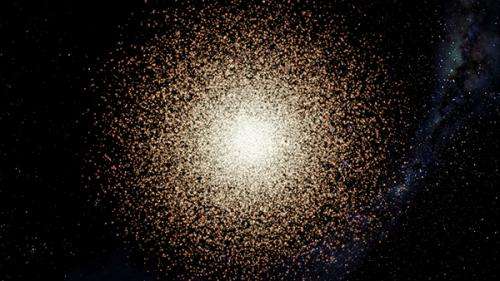Galactic dinosaurs not extinct

One of the biggest mysteries in galaxy evolution is the fate of the compact massive galaxies that roamed the early Universe.
Astronomers at Swinburne University of Technology believe they have discovered the answer.
"When our Universe was young, there were lots of compact, elliptical-shaped galaxies containing trillions of stars," Swinburne's Professor Alister Graham said.
"Due to the time it takes for light to travel across the vastness of space, we see these distant galaxies as they were in our young Universe. However in the present-day Universe very few such spheroidal stellar systems have been observed."
The most popular theory had been that over time, galaxy mergers might have led to their destruction and transformation into larger elliptical galaxies. However there have not been enough galactic collisions to account for the reduction in the number of these compact spheroids.
The Swinburne astronomers, led by Professor Graham, have eliminated the need for this problematic theory because they have now located the missing galaxies.
"They were hiding in plain sight," Dr Bililign Dullo, co-author of the research, said.
"The spheroids are cloaked by disks of stars that were likely built from the accumulation of hydrogen gas and smaller galaxies over the intervening eons."
What's more, the number of such hidden systems roughly matches the number of compact massive galaxies in the early Universe.
"Unlike the massive dinosaurs that existed when the Earth was much younger, the galactic dinosaurs of our Universe are not extinct," Professor Graham said. "They are simply embedded in large, relatively thin, disks of stars."
Due to the enormity of modern galaxy surveys, it had become common practice to treat individual galaxies as single component entities. However by carefully disentangling each galaxy's components, namely their inner spheroid and outer disk, the researchers uncovered the missing population.
"While the inner component is compact and massive, the full galaxy sizes are not compact," Ms Giulia Savorgnan, a PhD student involved in the discovery, said.
"This explains why they had been missed; we simply needed to better dissect the galaxies rather than consider them as single objects."
Closer to home, the central spheroid of our own Milky Way seems to have, in part, also existed when our Universe was young. We know that some of its stars are 12 billion years old, not much younger than the age of our Universe. The uncertain question is what fraction of our galaxy's bulge may have subsequently been built via other processes.
More information: Astrophysical Journal.arxiv.org/abs/1502.07024
Journal information: Astrophysical Journal
Provided by Swinburne University of Technology



















